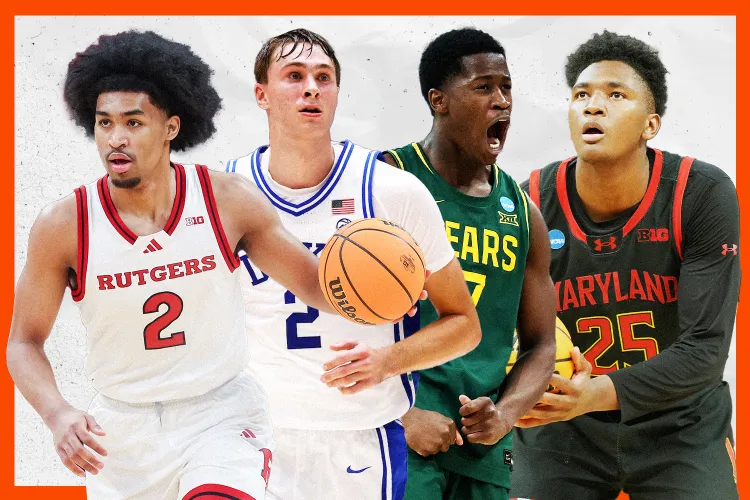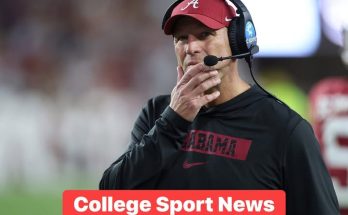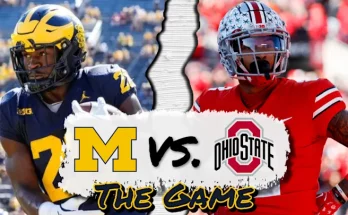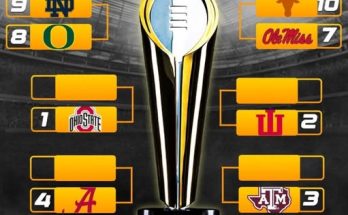The 2025 NBA Draft Combine, set to take place in Chicago, just became a showcase of Duke basketball excellence. Headlining a class teeming with promise, freshman sensation Cooper Flagg leads a stunning contingent of seven Blue Devils who received official invites to the most prestigious pre-draft event on the basketball calendar. With so much talent representing the Blue and White, it’s a vivid reminder that Duke remains one of the foremost factories for NBA-level talent and a program that continues to shape the future of professional basketball.
Flagg, widely projected to be the No. 1 overall pick in the 2025 NBA Draft, is the crown jewel of this Blue Devil cohort. The 6-foot-9 forward from Maine entered Durham with generational hype, and somehow, he not only lived up to it—he exceeded it. From the first tip of the season to the final whistle of March Madness, Flagg dazzled with his scoring versatility, elite defensive instincts, and a level of basketball IQ that far surpasses his age. A complete player with a relentless motor, Flagg became a national phenomenon and the face of college basketball during the 2024–25 season.
He led Duke in scoring, rebounding, and blocked shots, earning consensus First-Team All-American honors and capturing the John R. Wooden Award in the process. Flagg’s performances weren’t just eye-catching—they were game-changing. Whether it was his clutch shot-making in tight ACC battles or his ability to take over games in the NCAA Tournament, he consistently elevated the Blue Devils and fueled their deep postseason run. NBA executives have been circling his name on their draft boards since high school, and his performance this past year only solidified his status as the premier prospect in the upcoming draft class.
But Flagg isn’t the only Blue Devil headed to Chicago. He’s joined by teammates Jared McCain, Tyrese Proctor, Caleb Foster, Mark Mitchell, Kyle Filipowski, and Sean Stewart. The sheer number of invitees speaks volumes about the talent-rich roster that head coach Jon Scheyer assembled in only his second year at the helm. It also reflects Duke’s emphasis on player development and the NBA-readiness that the program continues to instill in its student-athletes.
McCain, a sharpshooting guard with a magnetic personality and strong social media following, had an impressive sophomore campaign. While Flagg often drew the spotlight, McCain was the steady hand in Duke’s backcourt, providing perimeter scoring and timely shot-making. Known for his quick release and deep range, McCain shot over 40% from three-point land while also improving as a playmaker and defender. His off-court charisma combined with on-court production makes him one of the more intriguing mid-first-round prospects heading into the Combine.
Tyrese Proctor, the Australian floor general who returned for his junior year, showcased maturity and a refined skill set this past season. After battling inconsistency in his first two seasons, Proctor found his rhythm in 2024–25, becoming Duke’s primary facilitator and often serving as the team’s emotional leader. His court vision, decision-making, and ability to control tempo were crucial to Duke’s success, and scouts now view him as one of the more NBA-ready point guards available. His decision to come back for a third year proved to be wise, as it allowed him to elevate his draft stock and polish aspects of his game that once gave scouts pause.
Caleb Foster, another guard with NBA aspirations, had a rollercoaster sophomore season but showed enough flashes to warrant Combine consideration. A former five-star recruit, Foster dealt with injuries and inconsistent minutes early in the season but finished strong, providing key contributions during Duke’s postseason run. At 6-foot-5 with combo-guard potential, Foster has the tools to thrive in the modern NBA, provided he continues to refine his handle and improve his defensive consistency. The Combine will give him an opportunity to remind scouts of his potential and possibly vault himself into late-first or early-second round consideration.
Mark Mitchell, Duke’s versatile wing-forward, remains one of the more polarizing prospects among draft analysts. Physically gifted and defensively stout, Mitchell carved out a valuable role as a two-way presence throughout the season. His perimeter shooting remains a work in progress, but his ability to guard multiple positions, finish at the rim, and rebound from the wing make him an appealing option for teams seeking a high-energy role player. Mitchell’s length and athleticism will be on full display in Chicago, and if he performs well in interviews and measurements, his draft stock could rise considerably.
Perhaps the most notable returnee of the group besides Proctor was Kyle Filipowski, the 7-foot center who stunned many by opting to come back for a junior season. In doing so, Filipowski cemented his legacy at Duke while also solidifying himself as one of the most skilled big men in the draft. He averaged a near double-double and showcased improved footwork, perimeter shooting, and shot-blocking ability. What makes Filipowski particularly attractive to NBA teams is his offensive versatility—he can space the floor, operate from the high post, and create mismatches in pick-and-pop situations. With three years of college experience under his belt, Filipowski enters the Combine as a seasoned veteran in a sea of one-and-done talent.
Sean Stewart, a sophomore forward and one of the most explosive athletes on the team, rounds out Duke’s seven-man representation. Though he played fewer minutes than others on this list, Stewart’s upside is undeniable. His leaping ability, rebounding tenacity, and defensive intensity make him an intriguing developmental project for NBA teams. Stewart’s Combine invite is a testament to the raw tools he possesses and the belief that he could flourish in a pro setting with time and the right development staff. A strong performance in drills and scrimmages could turn Stewart into a sleeper pick who ends up being one of the Combine’s biggest risers.
The presence of seven Duke players at the Combine is not just a feather in the cap for the individuals involved—it also speaks to the overall health and direction of the Blue Devil program under Jon Scheyer. Inheriting the legendary shadow of Mike Krzyzewski was never going to be easy, but Scheyer has proven in short order that he’s not merely maintaining Duke’s status—he’s enhancing it. Recruiting elite prospects is one thing, but developing them into NBA-ready players and future pros is another. This year’s Combine invite list is evidence that Scheyer and his staff are doing both at an exceptionally high level.
It also raises an important point about the changing dynamics of college basketball in the NIL era. Several of these players—Flagg, Proctor, and Filipowski among them—could have pursued professional opportunities earlier or elsewhere, but chose to remain in college and develop within the Duke ecosystem. Their decision paid off, not only in individual growth but also in team success. Duke was a mainstay in the top five all season long and made another deep March run, further increasing the national spotlight on its players. The program’s culture of accountability, emphasis on defense, and commitment to excellence continues to separate it from others—even in an increasingly player-driven, transient college basketball landscape.
For Flagg specifically, the Combine will likely serve as a coronation more than an audition. Scouts already view him as the most complete player in the draft pool—an elite two-way wing with the potential to transform an NBA franchise. Still, the Combine gives him a platform to confirm that status with measurements, interviews, and potentially limited on-court work. Whether he participates in scrimmages remains to be seen, but his mere presence in Chicago will send a ripple through the basketball world. Executives, agents, and media members alike will be watching his every move.
For the others, the Combine is a critical opportunity to rise up boards, prove their worth, and make lasting impressions. McCain can showcase his shooting stroke and offensive polish. Proctor has a chance to cement himself as a first-rounder. Filipowski can prove that three years in college have made him a plug-and-play big. Stewart can reveal why he might be this year’s Combine breakout. For all seven, it’s a culmination of hard work, belief, and the Duke standard.
The 2025 NBA Draft Combine will provide a glimpse into the future of the league—and if Duke’s representation is any indication, the future is looking very Blue. Cooper Flagg may be the headliner, but the collective presence of seven Duke players reaffirms that Durham remains the epicenter of basketball excellence, and its alumni pipeline to the NBA is as strong as ever. The Combine will offer clarity to teams and dreams to players, but it also serves as a powerful validation that Duke basketball is thriving in the post-Krzyzewski era.
As NBA teams begin to zero in on their draft targets, one thing is certain: no program has influenced this year’s Combine—and perhaps the draft itself—more than Duke. Whether it’s the prodigious Flagg, the seasoned Filipowski, the electric McCain, or the steady Proctor, Blue Devils will be in the spotlight, in conversations, and soon, in NBA jerseys. For fans, scouts, and executives alike, the Combine is about to become a Blue Devil showcase—and all signs point to greatness on the horizon.



